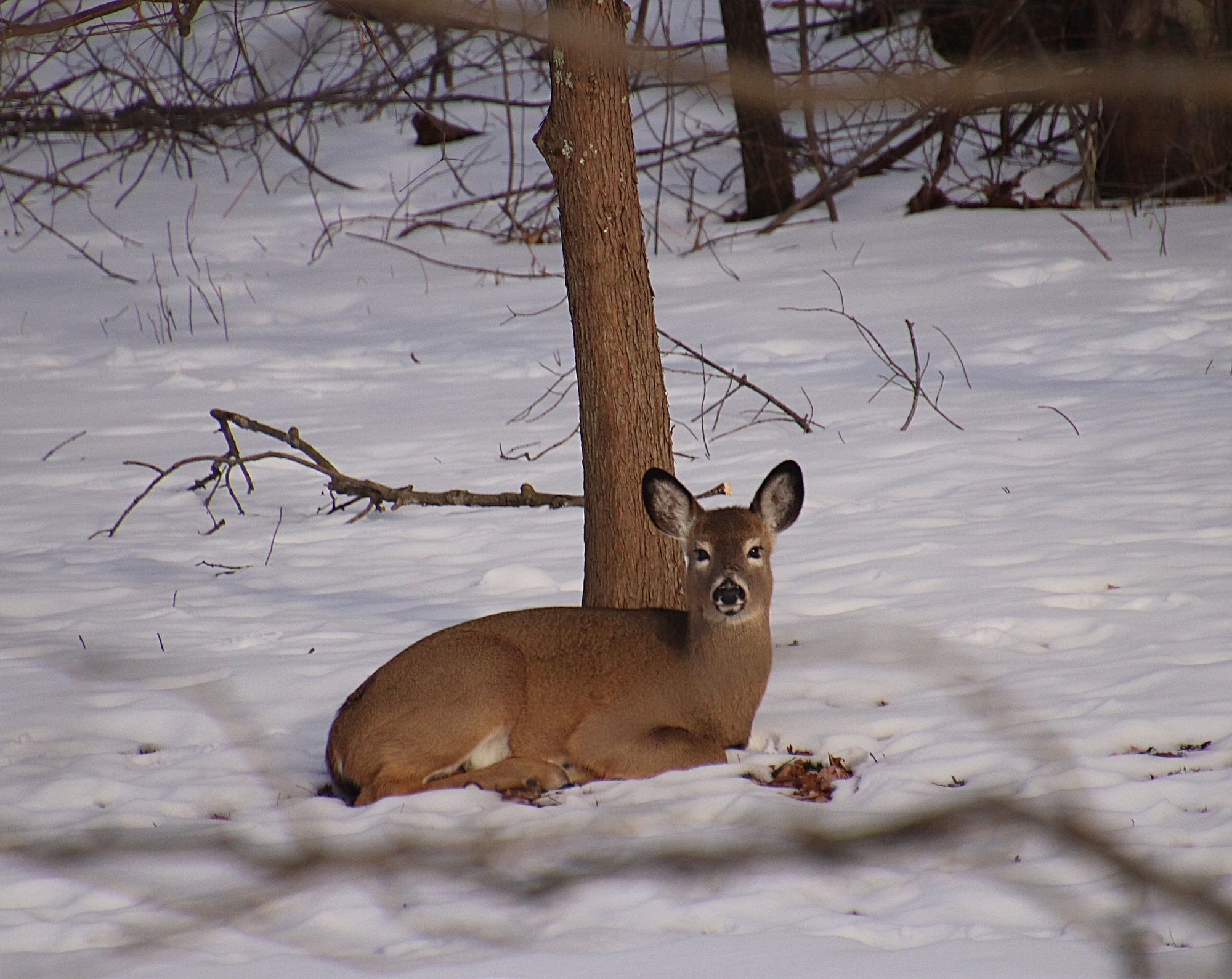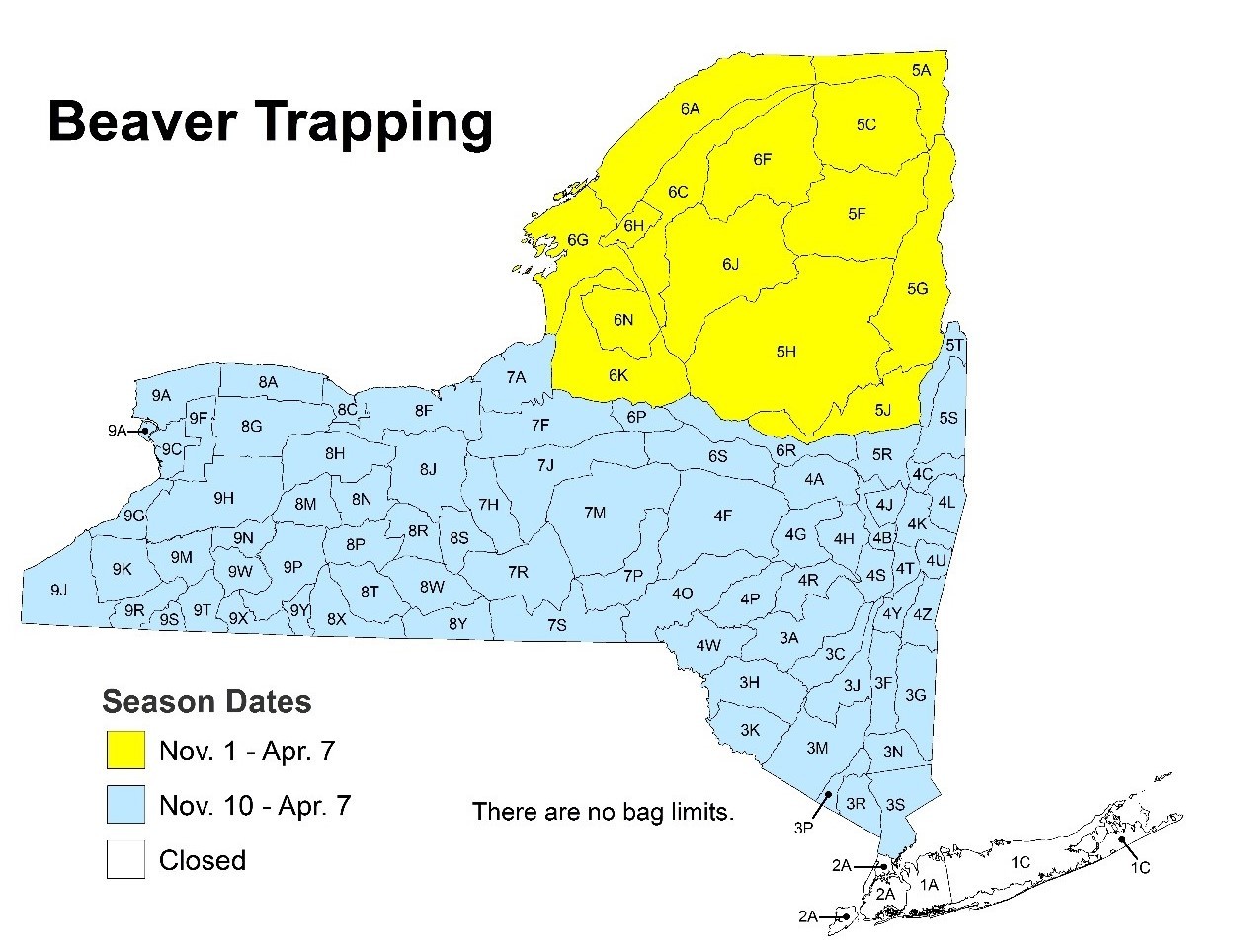Hunting and Trapping Newsletter
The New York State Department of Environmental Conservation sent this bulletin on 02/24/2021 05:10 PM EST |
| DEC Delivers - Information to keep you connected and informed from the NYS Department of Environmental Conservation |
| Share or view as a web page || Update preferences or unsubscribe |
Hunting and Trapping Newsletter |
Southern Zone 'Holiday Deer Hunt' Scheduled for December 2021DEC has adopted a new regulation to establish a "Holiday Deer Hunt" by extending the late bow and muzzleloader hunting seasons for deer from Dec. 26 to Jan. 1, in New York's Southern Zone.The new season provides an additional seven days of late season hunting with bows and muzzleloaders. Hunters must purchase a bowhunting or muzzleloading privilege to participate in the late bow or muzzleloader seasons and may use all deer carcass tags valid during those seasons. Last September, DEC requested public comment on the proposal to hold a holiday hunt and received more than 3,000 comments. DEC thoroughly reviewed all the comments received, and after careful consideration, advanced the proposal for adoption. A summary of the public comments and DEC's responses to comments are available for review in the February 17 issue of the New York State Register. DEC biologists anticipate many families gathered together for the holidays, and students home on school break, may take advantage of this new opportunity. Given the requirement for use of primitive implements, biologists do not anticipate a significant effect on deer harvest or local deer populations.Annual Deer and Bear Harvest Estimates Coming Soon
At the close of 2020-21 deer hunting seasons, hunter reports of harvested deer remained about 6 percent short of the number reported in 2019-20, whereas reported bear take varied from an 11 percent decrease in the Southern Zone to a 62 percent increase in the Northern Zone (bear take was exceptionally low in the Northern Zone last year). It is important to note that these numbers may or may not correspond directly to the increase or decrease in overall deer numbers of deer and bear taken this past year. The other key variable is the reporting rate, or proportion of successful hunters who reported their harvest as required by law. With a new reporting system in place this past season, the rate at which hunters reported their harvests may have changed. System upgrades through the season improved usability, but if the percentage of successful hunters who reported their harvest declined, then the calculated harvest may actually be similar or greater than last year. See Appendix 4 of DEC’s Deer Management Plan for a description of how deer harvest is calculated (bear harvest works similarly). Photo by Pete Patrick. Winter Wildlife AdaptationsThe winter season presents a series of challenges for wildlife, such as food shortages, colder temperatures and large snowfalls. Fortunately, native wildlife has developed unique physiological and behavioral traits to help them survive and thrive in New York’s cold winter climate. A prime example is the unique shape of mammalian hair follicles, which are hollow and trap air, creating an insulating barrier to keep animals warm when temperatures drop. Beyond having a thermal coat, white-tailed deer will seek dense conifer stands or sheltered suburban environments during times of severe low temperatures and deep snow. This behavior is known Black bears also have a very unique winter trait. It’s well-known that bears hibernate in the winter, which involves putting on additional weight during autumn and then finding a den where the bear will sleep through winter, surviving on the additional fat stores from the fall. Black bears do not truly hibernate but instead experience what is called torpor. During the torpor, the bear will experience periods of slowed heart rates and inactivity but if there is an unusual warm spell or a mild winter, the bear may become more active and leave the den to forage for more food. In the case of female bears, known as sows, they will also give birth to cubs during their winter torpor. The sows provide food and shelter for the cubs during winter, so that they are strong and healthy by the time spring arrives. Large mammals aren’t the only critters that have unique traits. Many species of rodents (ex. squirrels, chipmunks) will store food in what is known as a cache during the fall, and then utilize those caches throughout the winter. In the case of hare and ermine (a type of small weasel), their fur changes colors in the winter from a light brown to a stark white which helps them blend in with the surrounding snow and hide from predators. Lastly, beavers will remain active throughout winter and will not only cache food like fellow rodents; they will maintain open patches of water in the surrounding areas of their den to allow periodic passage in and out. While New York winters can get frigid and the snow can pile up, rest assured that our native wildlife have developed ways to not only survive winter, but to thrive in it. Photo by Fred Couse Extended Trapping Seasons in Central and Western New YorkDEC reminds trappers about extended beaver trapping season dates for Central and Western New York. DEC extended the beaver trapping season in these regions until April 7, 2021, after new regulations were enacted in November 2020. The beaver season date changes are part of a larger regulation change affecting mink, muskrat, and beaver trapping season dates in New York State. DEC first proposed the changes following a 2017 survey of furbearer trappers and hunters about season timing preferences. Trappers and furbearer hunters indicated a preference for dates that would maximize pelt quality to promote wise, sustainable use of the abundant furbearer resources in New York. The new season dates will expand trapper opportunities in Central and Western New York, streamline water trapping dates, and more effectively manage the state's healthy beaver population. The full summary of changes is outlined below. Beaver Trapping: Beaver trapping season throughout the entire Southern Zone (with the exception of New York City and Long Island) will now run from Nov. 10 through April 7. In the Northern Zone, the beaver trapping season is unchanged and is open from Nov. 1 through April 7. Please note that the printed version of the 2020-2021 Hunting and Trapping Regulations Guide does not reflect the newly adopted season dates.
Mink & Muskrat Trapping: In Central and Western New York (WMUs 6P, 7F, 7H, 7J, 7M, 7P, 7R, 7S, 8A, 8C, 8F, 8G, 8H, 8J, 8M, 8N, 8P, 8R, 8S, 8T, 8W, 8X, 8Y, 9A, 9C, 9F, 9G, 9H, 9J, 9K, 9M, 9N, 9P, 9R, 9S, 9T, 9W, 9X, 9Y), the mink and muskrat trapping season will now run from Nov. 10 through Feb. 15 each year, reflecting an earlier season opening date. The season in southeastern New York remains unchanged, running from Nov. 10 through April 7. Beginning this fall, the mink and muskrat trapping season in the Northern Zone will run from Nov. 1 through April 15, a slightly later opening date.
|
|
|

 In coming weeks, DEC biologists will be calculating the 2020-21 deer and bear harvests. DEC uses the tag and location data supplied by hunters when they report their deer or bear harvest, together with data collected through examination of thousands of harvested deer and bear by DEC staff and cooperators to determine the rate at which animals are reported for each zone and tag type. From this, DEC biologists can calculate the total deer and bear harvest with great precision.
In coming weeks, DEC biologists will be calculating the 2020-21 deer and bear harvests. DEC uses the tag and location data supplied by hunters when they report their deer or bear harvest, together with data collected through examination of thousands of harvested deer and bear by DEC staff and cooperators to determine the rate at which animals are reported for each zone and tag type. From this, DEC biologists can calculate the total deer and bear harvest with great precision. as yarding. During elongated cold spells, large groups of deer may congregate together in these deer yards, so don’t be surprised when you see large herds of deer in your neighborhood as weather intensifies.
as yarding. During elongated cold spells, large groups of deer may congregate together in these deer yards, so don’t be surprised when you see large herds of deer in your neighborhood as weather intensifies.
